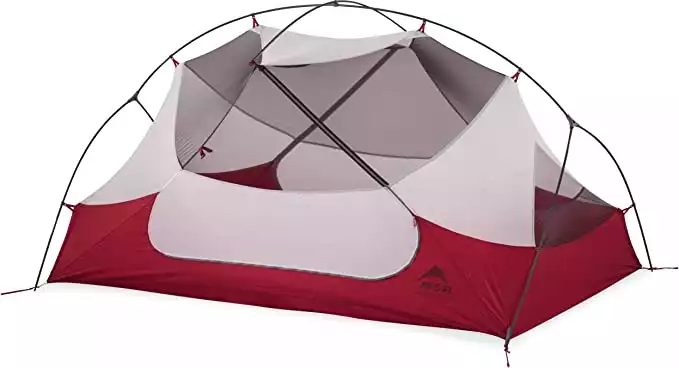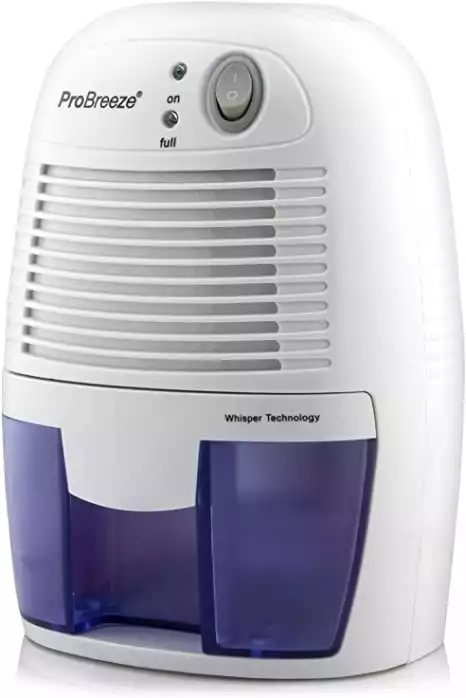Condensation in a tent is the archnemesis of any camper. Whether you’re out on a short backpacking trip or a full-fledged expedition, moisture within your camp shelter can quickly dampen all your gear, making it hard for you to stay warm and dry while outside.
Thankfully, there are ways to prevent condensation in a tent — the key is knowing what to do when you arrive in camp for the night.
If you’re wondering how to stop condensation in a tent during your next adventure, have no fear, we’re here to help. Coming up, we’ll give you 11 top tips to minimize any moisture in your shelter at night so you can wake up to a dry tent and dry gear each morning.
11 Tips To Stop Condensation In Your Tent
1. Choose A Breathable Tent
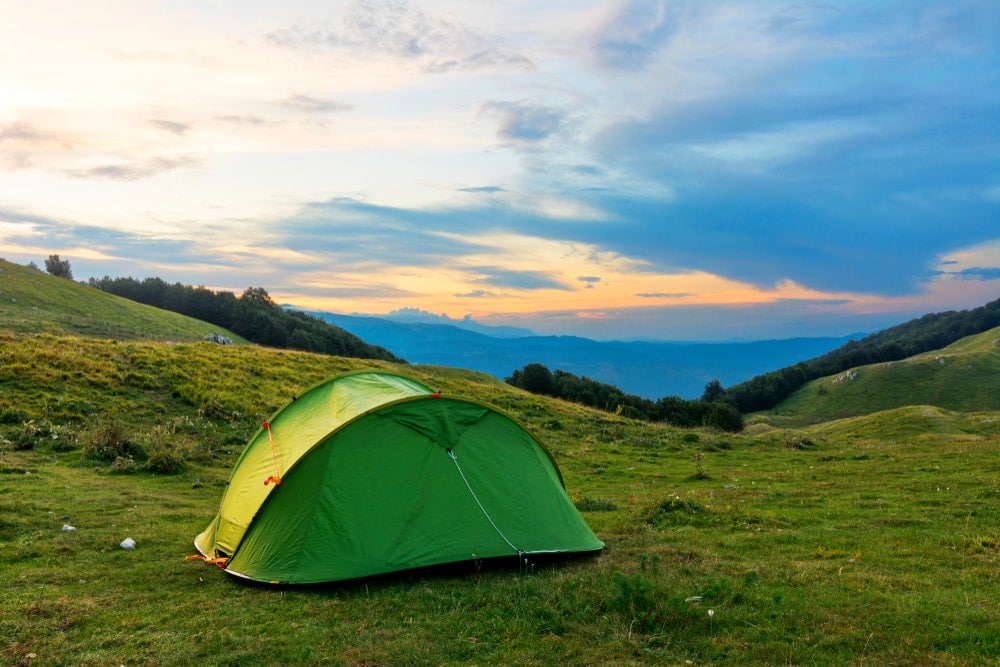
Perhaps the most important step you can take if you want to keep moisture at a minimum while you camp is to choose a breathable tent. In general, this usually means opting for a double-wall tent rather than a single wall model.
Why?
Well, most double-wall tents, such as the MSR Hubba Hubba NX 2, feature large mesh panels in their inner canopies, which help encourage airflow at night. Meanwhile, single wall models have fabrics that just aren’t as breathable, resulting in more moisture and more condensation at night.
- Lightweight 3-season tent for two people
- Includes a full tool kit
- Spacious and easy to set up
2. Make Campsite Selection A Priority
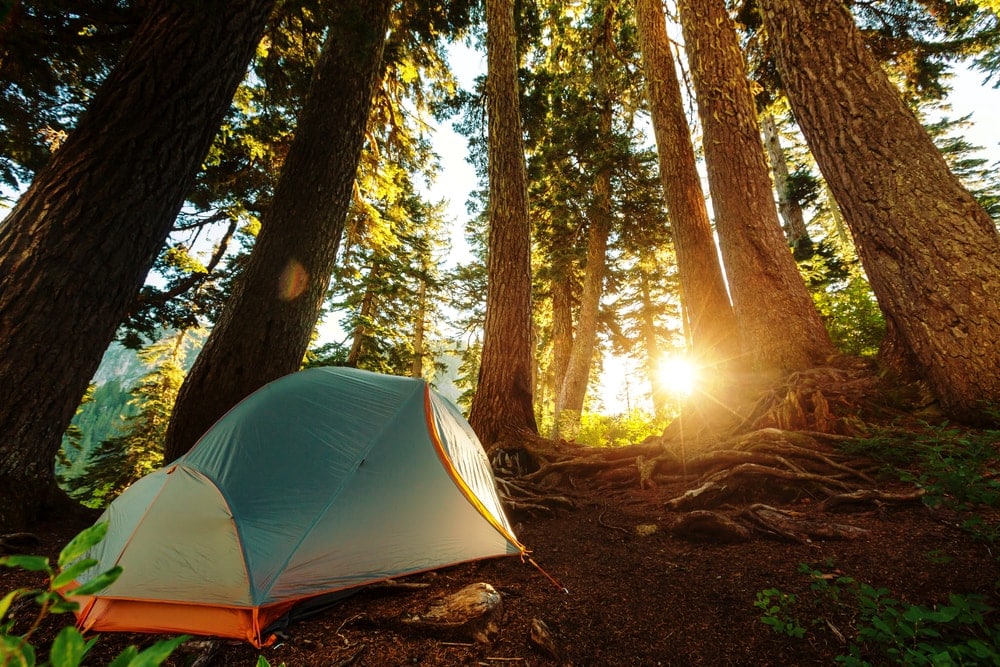
Once you arrive at camp, where you decide to place your tent is of the utmost importance. That’s because your campsite selection can determine how much moisture and warmth your tent is exposed to each night.
For the most part, pitching a tent under trees will usually limit the amount of condensation in your shelter. Since warm air tends to collect under trees, the water vapor from your breath is less likely to condensate if you’re sleeping in a warm, forested area than if you were in a cold alpine locale.
3. Avoid Camping On Wet Ground
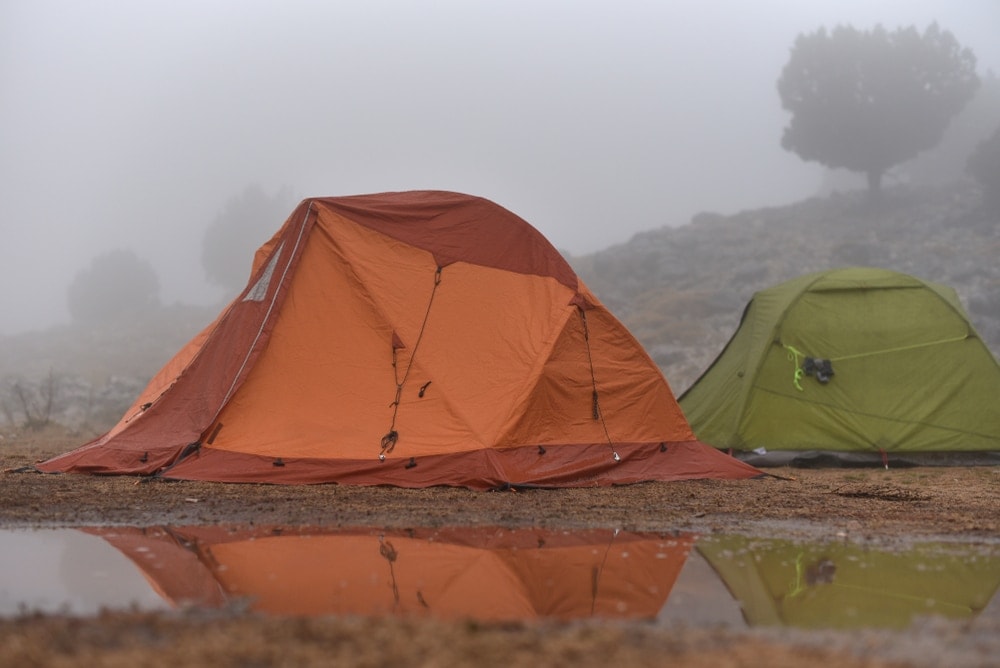
The key to waking up to a dry tent is going to bed with a dry tent, so avoiding wet ground when setting up camp is of the utmost importance.
Although any quality shelter will have a fully seam-taped bathtub-style floor made from waterproof fabrics to keep you dry, reducing the amount of moisture in and around your sleeping area does make a difference in the long run.
One of the easiest ways to do this is to avoid pitching your tent on damp grass or mud. If you arrive in camp after an afternoon rainshower, consider waiting a few hours before setting up your tent to allow the ground to dry out.
4. Camp Away From Water Sources
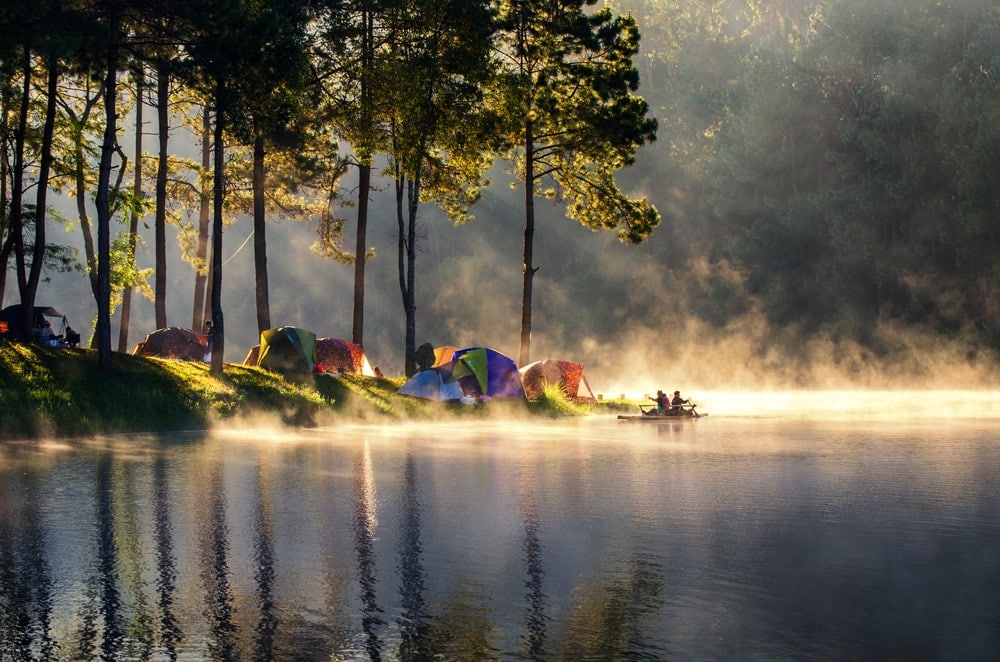
While camping away from water sources is already a must if you want to leave no trace, doing so also helps minimize the amount of moisture in your tent at night.
Since water sources tend to be, well, wet, you can expect quite a bit of condensation (a.k.a. fog) around them on cold mornings. So, while pitching a tent near a lake or spring might make for some great photos, it’s generally best for condensation’s sake to stay at least 200ft (60m) away from any water source, including swamps and marshes.
5. Ensure Your Rain Fly Is Taut
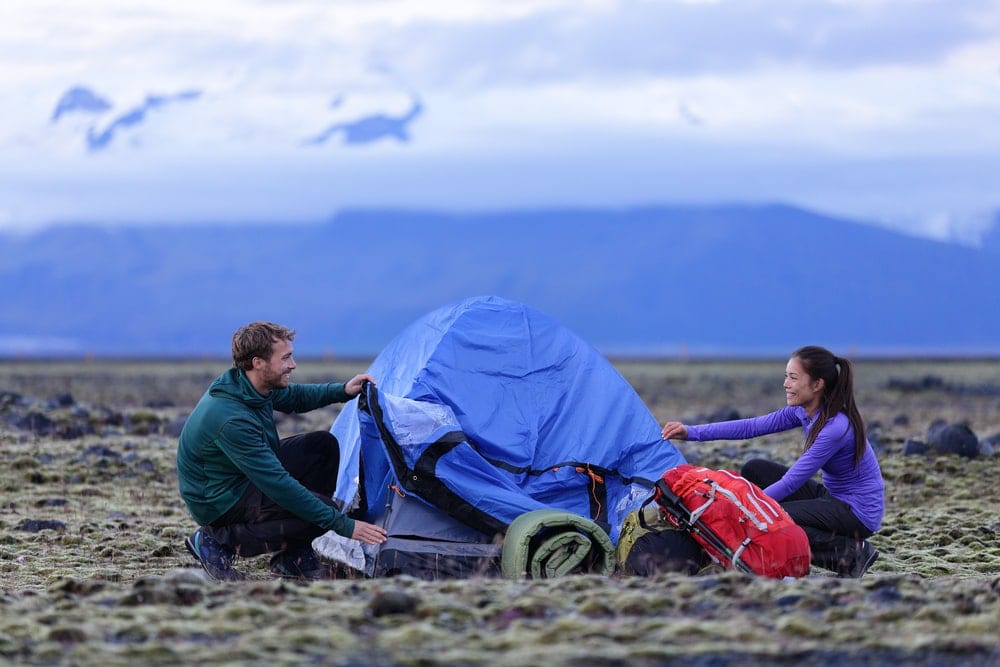
One of the most common, yet overlooked, causes of excess camping condensation is a loose rain fly. Although this might not seem like a big deal on a calm, clear night, flappy rain flies can actually increase the amount of moisture that makes its way into your sleeping area.
Therefore, it’s best to tension your rain fly so that it’s taut enough to float above the mesh canopy in your tent instead of resting directly on top of it. Doing so increases the amount of airspace between the two walls, maximizing ventilation and airflow while reducing condensation.
6. Keep Wet Gear And Shoes Outside
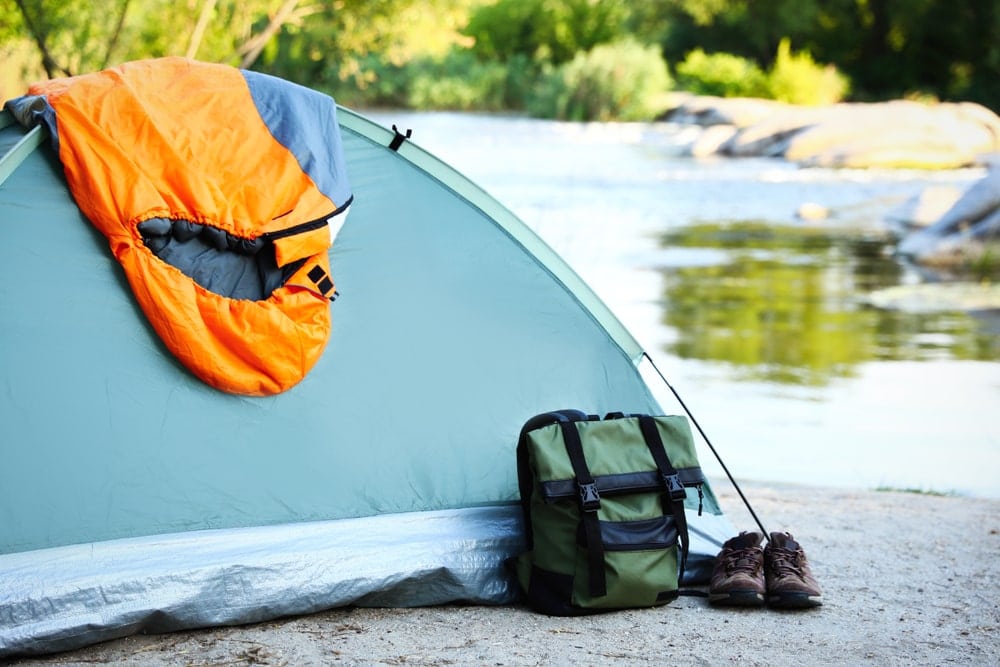
Reducing condensation in a tent starts with minimizing all sources of moisture. While the water vapor in your breath happens to be the primary cause of moisture build-up at night, you’d be hard-pressed to find a way to limit your breathing until sunrise.
So, the best alternative is to keep all wet gear and muddy shoes outside your shelter while you camp. Not only does this help keep your tent area clean and prevents building up molds, but it also helps reduce sources of water within your tent.
That being said, if you’re a bit concerned about your gear blowing away or getting soaked in a rainstorm at night, you can always stash it in your tent’s vestibule. Although this isn’t as ideal as, say, placing your gear in a backpack with a pack liner and placing it in a secure place under a tree, it’s a solid alternative in a pinch.
Moreover, it’s also worth pointing out that hanging up wet gear inside your tent is a sure-fire way to introduce lots of moisture to your sleeping area. Minimize moisture in your shelter by setting up a clothesline in your campsite rather than hanging up gear inside your shelter.
7. Roll Back Your Rain Fly
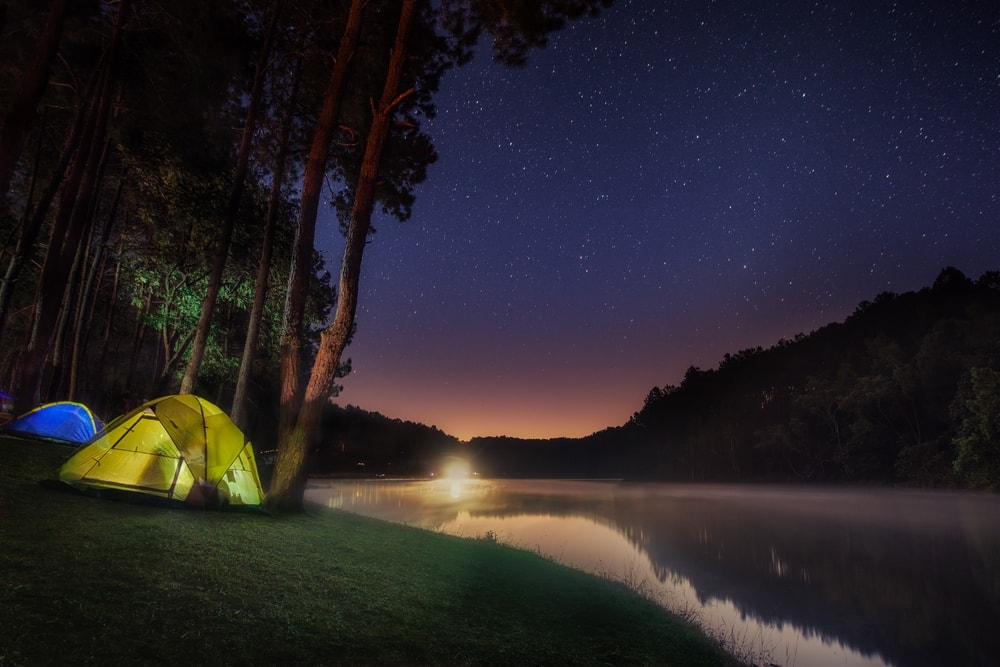
Once your tent is pitched properly in a low-moisture area, it’s time to start thinking about steps you can take to decrease the likelihood of condensation while you sleep. While there’s no fool-proof way to completely eliminate moisture, rolling back your rainfly is one of the best steps you can take.
In fact, rolling back your rainfly on a calm, dry night is perhaps the most effective way at nixing condensation since it allows plenty of air to flow through your sleeping area. Most of the time, you actually don’t really need to pitch your tent with the rainfly on unless rain is in the forecast, but you should always keep the rainfly nearby, just in case.
Alternatively, if you’re a bit worried about the rain or the wind, you can always roll back the tent rain fly door to expose the mesh canopy underneath. If your tent has two doors, it’s worth opening up both doors to allow for a bit of a cross breeze at night.
Moreover, don’t forget to open up the storm flaps on any windows you might have to encourage more airflow on muggy nights.
8. Open Up All The Vents
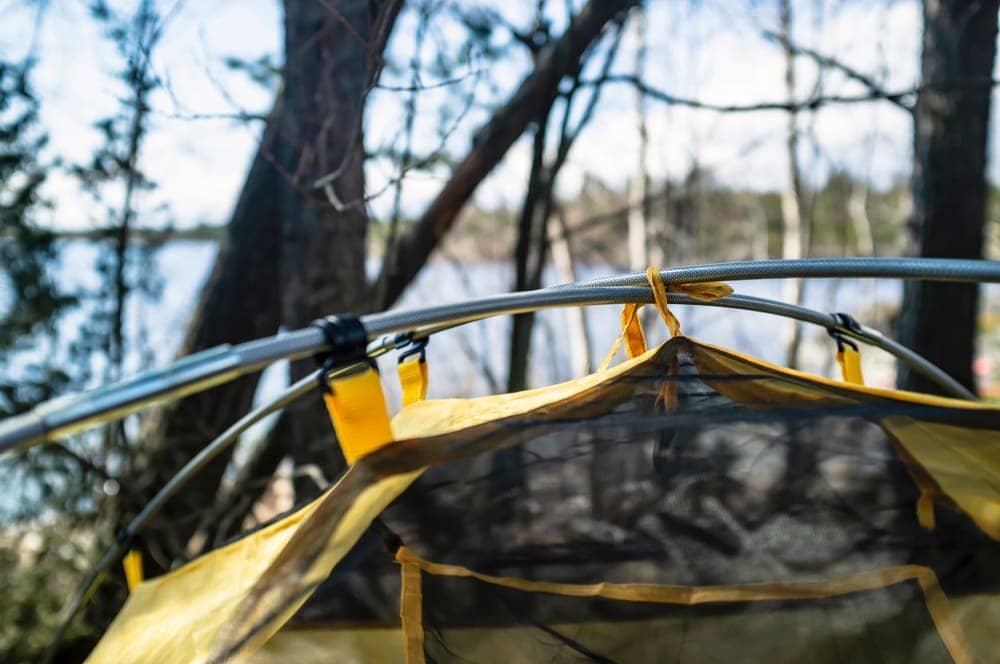
If rain is too much of a concern at your campsite to even think about rolling back the fly of your tent, be sure to open up all the vents on your shelter, instead.
These days, pretty much every tent comes with built-in vents, so it’s important that you make the most of whatever options you might have. Open up all these vents — even if it’s raining! — and the increased airflow can make a big difference toward reducing any moisture build-up at night.
9. Don’t Wipe Down Your Tent
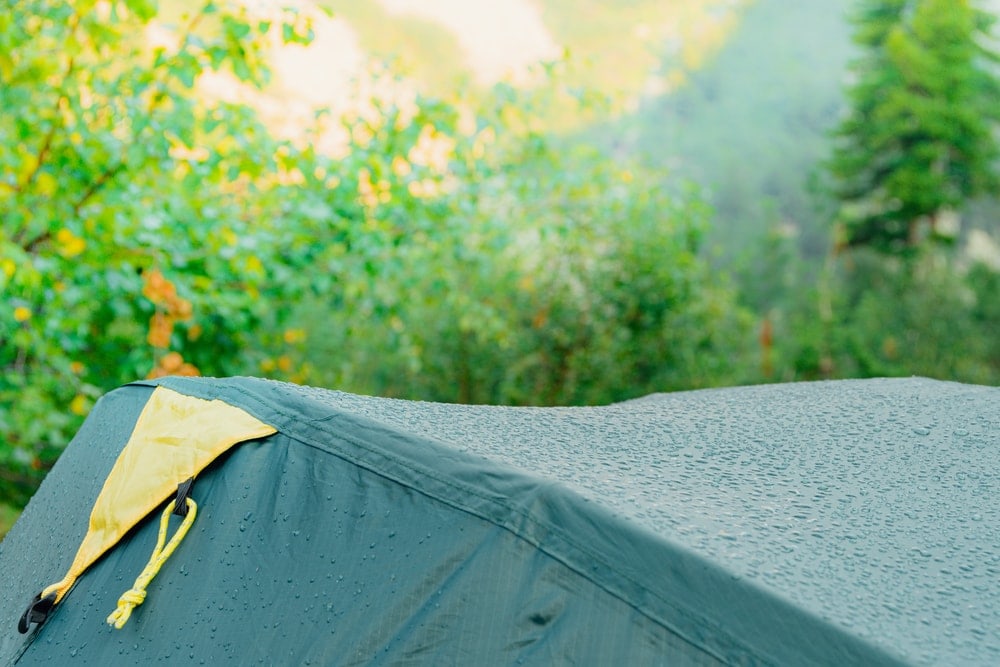
Now, this might be a bit controversial, but we’d actually recommend that you don’t wipe down your tent at night, even if humid air has caused condensation-galore over all your mesh canopy.
That’s because, unless you have an endless supply of towels with you in camp, it’s almost impossible to fully wipe off any moisture on your tent’s inner walls. Partially wiping off the moisture from the inside of your tent will simply cause some of the water droplets to pool up in one location, making it more likely that they’ll get heavy enough to fall onto your gear like rain.
Moreover, condensation in a tent usually only gets your gear soaking wet if you’re pressed right up to the side of the shelter at night. Therefore, instead of wiping off any moisture (which can ironically make condensation worse), try to position yourself toward the inside of the tent, away from wet tent walls that can dampen your gear.
10. Dry Out Your Tent Each Morning
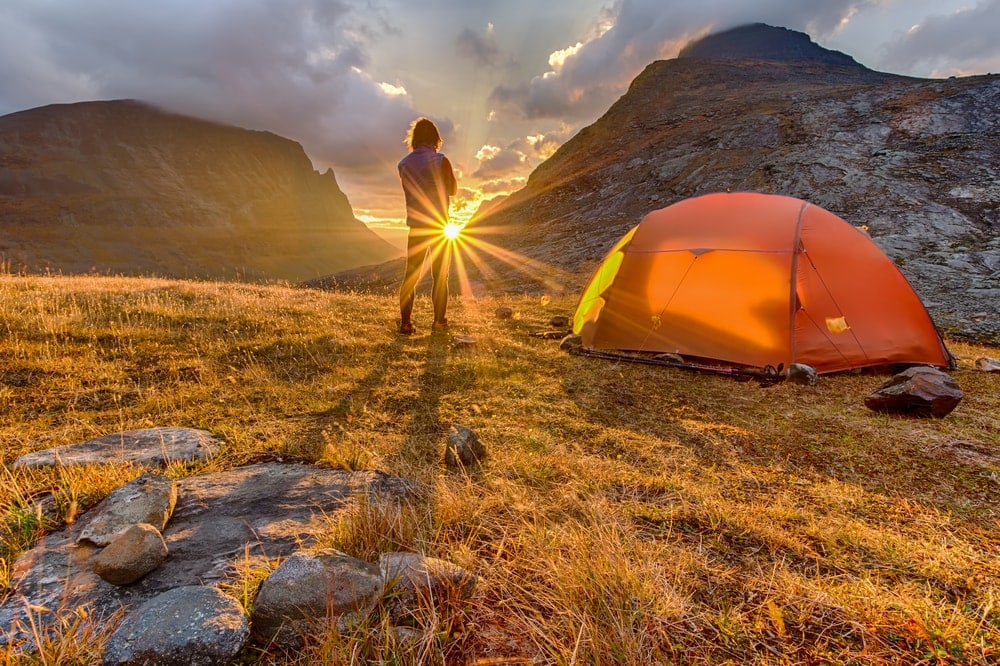
Some amount of condensation is almost inevitable while camping, so it’s essential that you take the time to dry out your tent each morning before packing it away. Doing so can help reduce the likelihood that you pitch a wet tent that night, which will only make your condensation problems worse throughout your trip.
With that in mind, perhaps the best way to dry out your shelter is to simply leave it set up as you make breakfast. Remove the rainfly and hang that up on a clothesline to dry separately, but most mesh canopies actually dry faster when pitched in a sunny spot than when hung.
11. Consider A Tent Dehumidifier
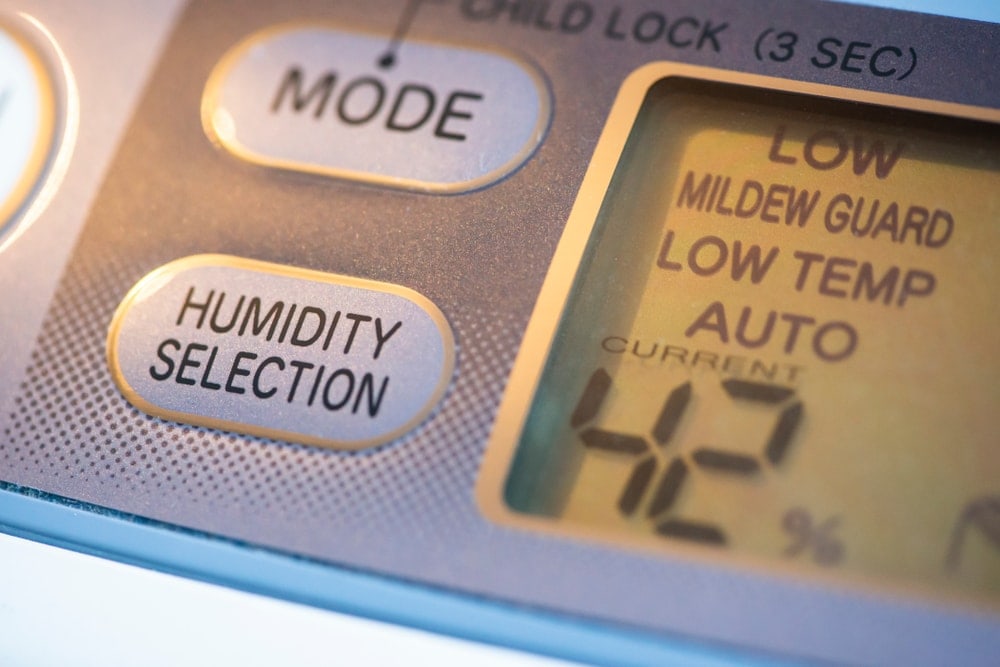
Finally, if you’re really struggling to get condensation under control, consider a tent dehumidifier.
Although this is really only plausible for car campers that have access to electrical hookups, a small dehumidifier, like the Pro Breeze Electric Mini, can help trap any water vapor in the humid air, preventing condensation from building up throughout the night.
Do keep in mind, however, that dehumidifiers have limited capacities. So, unless you are able to continuously empty the dehumidifier’s water tank throughout the night, you may still find that condensation builds up on very damp evenings.
Therefore, it’s best to use a dehumidifier as an additional tool on top of all the other tips that we’ve discussed instead of thinking of it as an all-in-one solution.
- Item measures 7 x 6 x 11 inches (18 x 15 x 28 cm)
- Works effectively above 15 C/ 59 F
- Small and lightweight, perfect for use in camping
FAQ
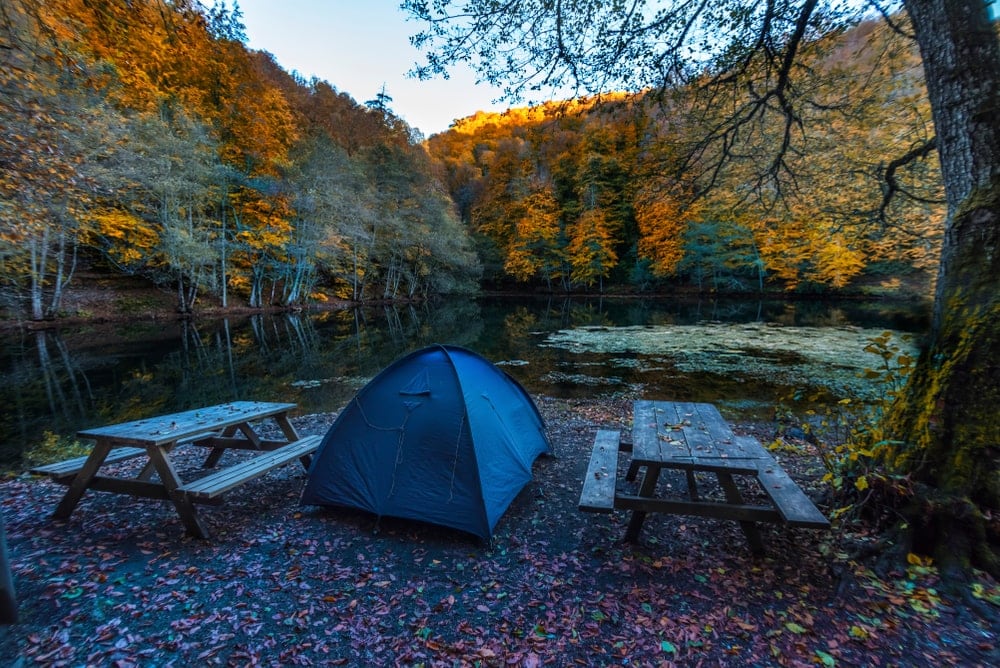
1. How Much Moisture Does A Person Exhale A Day?
Although it depends a lot on the current air temperature and humidity, a 2012 Polish study suggests that we humans lose about 168 to 480 mL of moisture throughout breath each day (about 7 to 20 mL/h). However, if you’re exercising, you can lose up to 60 to 70mL/h of moisture through your breath.
2. Does Heating Make Damp Worse?
In some home central heating systems, damp can be made worse by the fact that not all rooms in a house are heated evenly. However, in an outdoor context, short-term dampness in a tent is more a result of condensation rather than a tent heater.
3. What Causes Condensation In My Tent?
Condensation in a tent occurs whenever large amounts of moisture (generally from your breath) come into contact with cold air. Although the physics behind this process are too complex to get into here, suffice it to say that water vapor from your breath condensates in chilly temperatures, leading to wet gear each morning and moisture on the inside of your tent.




